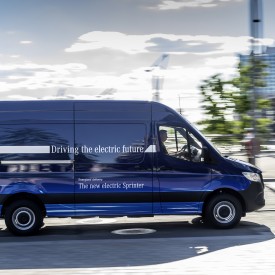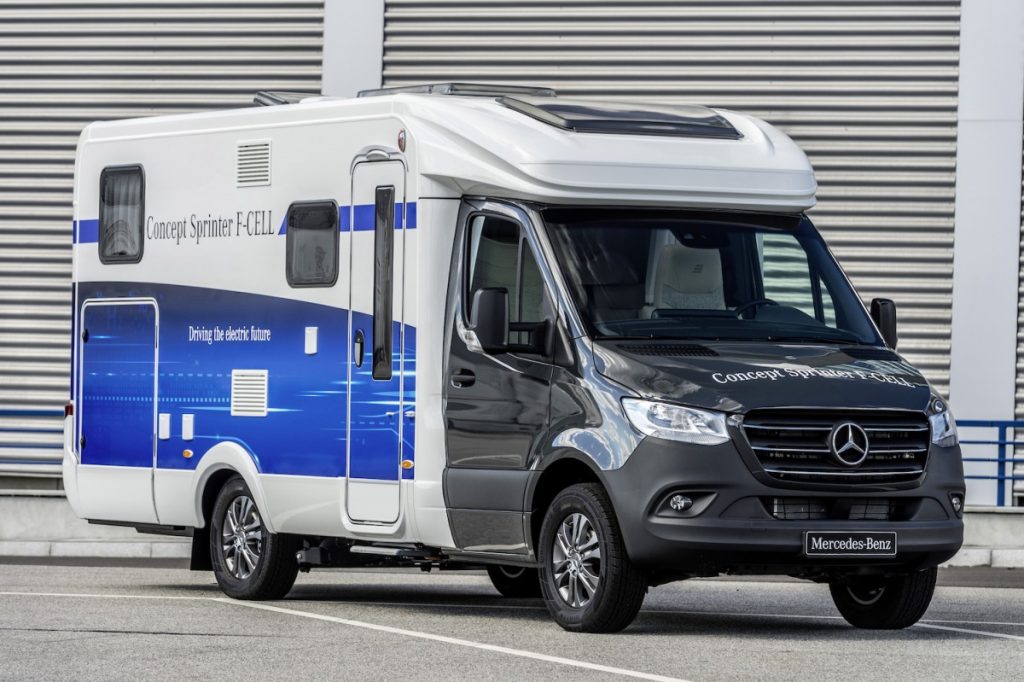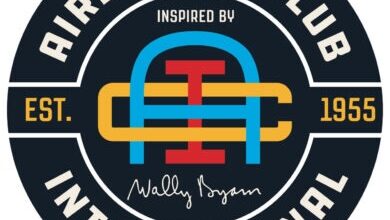The eSprinter Charges Forward with New Possibilities

To take charge of a future with zero emissions, Mercedes-Benz looked around its technology-rich playground and gave what the public wanted with the eVito earlier this year.
The van, intended for commercial fleets operating locally, has a driving range of about 93 miles on a single, full charge (which takes about six hours). But now Mercedes-Benz Vans will release a fully electric vehicle that has visible applications to the RV market.
“We started with the eVito, which in the U.S. is known as the Metris, which has been introduced to the market … and one year ago. We also gave a first glance at what is there to come,” said Oliver Fenzl, Daimler’s eDrive@Vans spokesperson. “So, the next logical step – when coming from a small-sized van – is to go into the large size segment, which is the eSprinter.”
Launching at the end of this year will be two eSprinters with different battery variants – one capable of reaching 71.5 miles on a single charge and 93.2 miles on the other. Both are capable of carrying a payload of 7,000 pounds. Max speeds can be configured to 50, 62, or 74 mph. And to get back on the road faster, the eSprinter comes with DC charging function, which, on an 80-kilowatt charging capacity, enables the battery to reach 80-percent charged within 30 minutes. The batteries are fitted to the underbody as to make it more room-efficient.
To that end, the eSprinter is first intended for courier services, but Fenzl mentions that having the availability of various technology makes it possible to do whatever the market wants.
“What I can say is that the nice thing here is that the Sprinters we produce are on the very same line as the conventional Sprinter in Dusseldorf, Germany,” he said. “So, we can very quickly react to market demand.”
And Mercedes takes a hands-on approach as team members have been going on the daily courier routes with various companies. “We were measuring what was the range they actually need,” Fenzl said. “What are the ergonomics factors they need. Heating. Energy management. Charging. All the factors”
To expand on what avenues are possible for zero emissions, Mercedes-Benz Vans also introduced a Class B-looking, hybrid vehicle with fuel cell and battery technology. With three tanks in the substructure storing nearly 10 pounds of hydrogen, the fuel cell Sprinter can travel up to 186 miles.
“With the Concept Sprinter F-CELL, we have shown that fuel cell-based drivetrain is a technology that we are able to implement, and which could be an additional option in the mix of different drives,” said Fenzl. “Due to the high energy density of the hydrogen, there are potentials for the payload and the range with relatively short refueling time.”
But Fenzl stresses that what Mercedes-Benz Vans builds is entirely dependent on market demand. It was a point brought up in the unveiling of the Concept Sprinter F-CELL last year.
Like the eSprinter, before it’s market ready, Fenzl said Mercedes-Benz Vans would perform tests on the Sprinter F-CELL with select customers.


